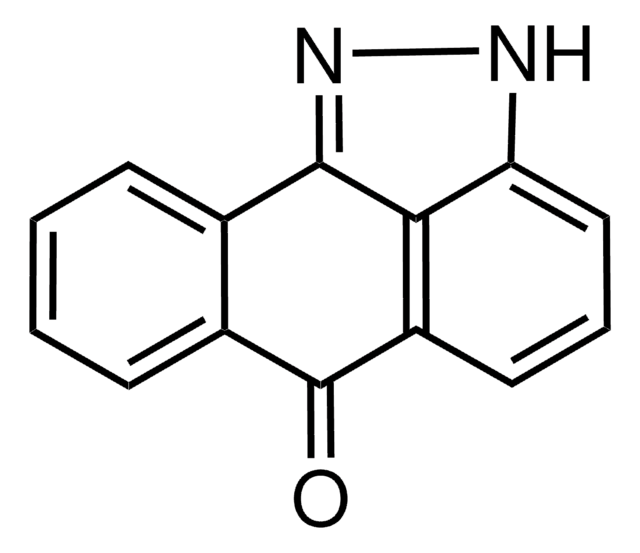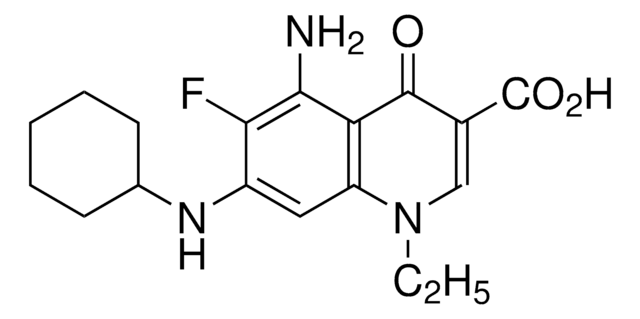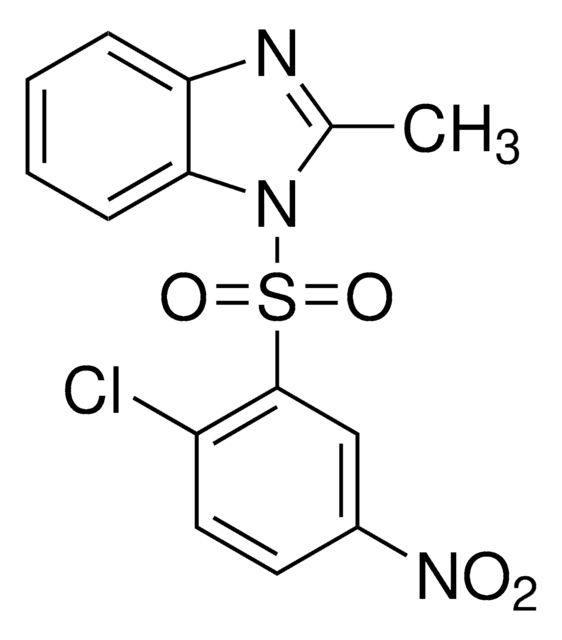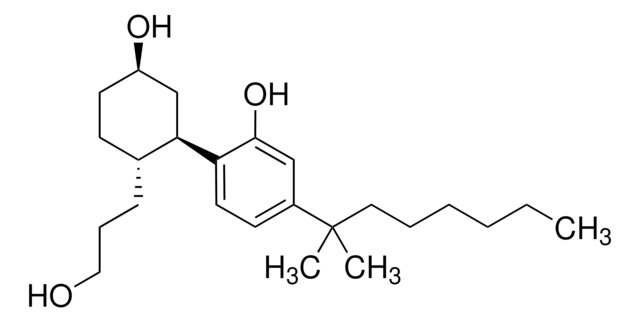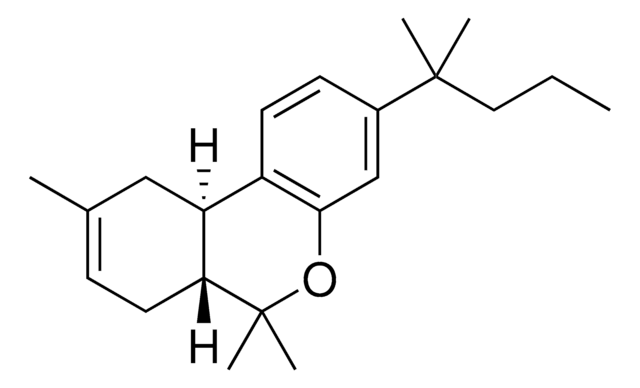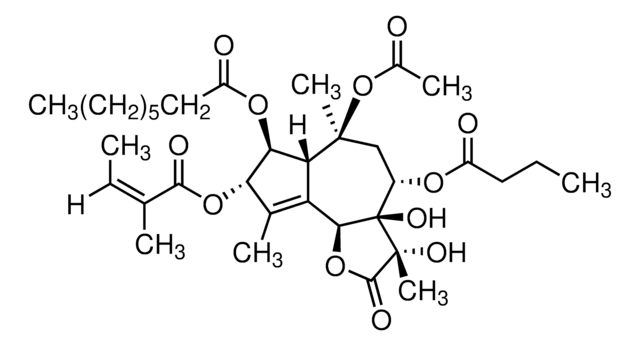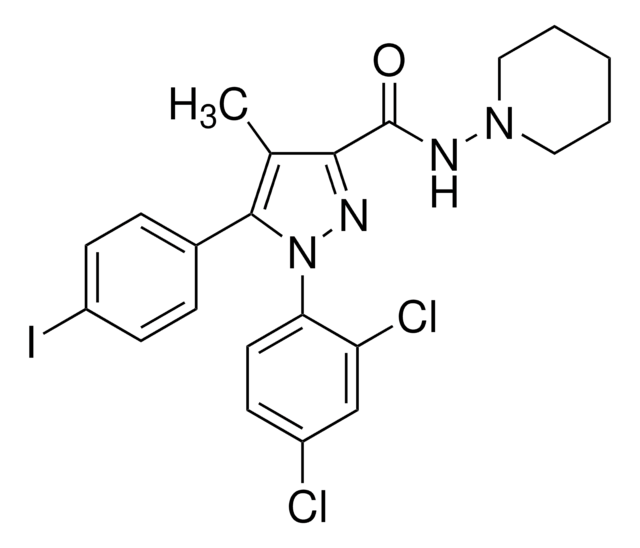SML0800
Rimonabant hydrochloride
≥98% (HPLC), powder, cannabinoid type-I receptor antagonist
Synonim(y):
5-(4-Chlorophenyl)-1-(2,4-dichlorophenyl)-4-methyl-N-1-piperidinyl-1H-pyrazole-3-carboxamide hydrochloride, SR-141716, SR-141716A, SR141716, SR141716A
About This Item
Polecane produkty
Nazwa produktu
Rimonabant hydrochloride, ≥98% (HPLC)
Poziom jakości
Próba
≥98% (HPLC)
Formularz
powder
warunki przechowywania
desiccated
kolor
white to beige
rozpuszczalność
DMSO: 20 mg/mL, clear
temp. przechowywania
2-8°C
ciąg SMILES
CC1=C(C2=CC=C(Cl)C=C2)N(C3=CC=C(Cl)C=C3Cl)N=C1C(NN4CCCCC4)=O.Cl
InChI
1S/C22H21Cl3N4O.ClH/c1-14-20(22(30)27-28-11-3-2-4-12-28)26-29(19-10-9-17(24)13-18(19)25)21(14)15-5-7-16(23)8-6-15;/h5-10,13H,2-4,11-12H2,1H3,(H,27,30);1H
Klucz InChI
REOYOKXLUFHOBV-UHFFFAOYSA-N
informacje o genach
human ... CNR1(1268)
Zastosowanie
- to study its effects on protein synthesis in C2C12 myotubes
- to analyze its effects on human astroglia
- in combination with methanandamide (mAEA) to study its effects on murine gastric vagal afferent mechanosensitivity
Działania biochem./fizjol.
Cechy i korzyści
Hasło ostrzegawcze
Danger
Zwroty wskazujące rodzaj zagrożenia
Zwroty wskazujące środki ostrożności
Klasyfikacja zagrożeń
Acute Tox. 3 Oral - Eye Irrit. 2
Kod klasy składowania
6.1C - Combustible acute toxic Cat.3 / toxic compounds or compounds which causing chronic effects
Klasa zagrożenia wodnego (WGK)
WGK 3
Temperatura zapłonu (°F)
Not applicable
Temperatura zapłonu (°C)
Not applicable
Wybierz jedną z najnowszych wersji:
Masz już ten produkt?
Dokumenty związane z niedawno zakupionymi produktami zostały zamieszczone w Bibliotece dokumentów.
Klienci oglądali również te produkty
Produkty
Sigma-Aldrich offers many products related to cannabinoid receptors for your research needs.
Nasz zespół naukowców ma doświadczenie we wszystkich obszarach badań, w tym w naukach przyrodniczych, materiałoznawstwie, syntezie chemicznej, chromatografii, analityce i wielu innych dziedzinach.
Skontaktuj się z zespołem ds. pomocy technicznej